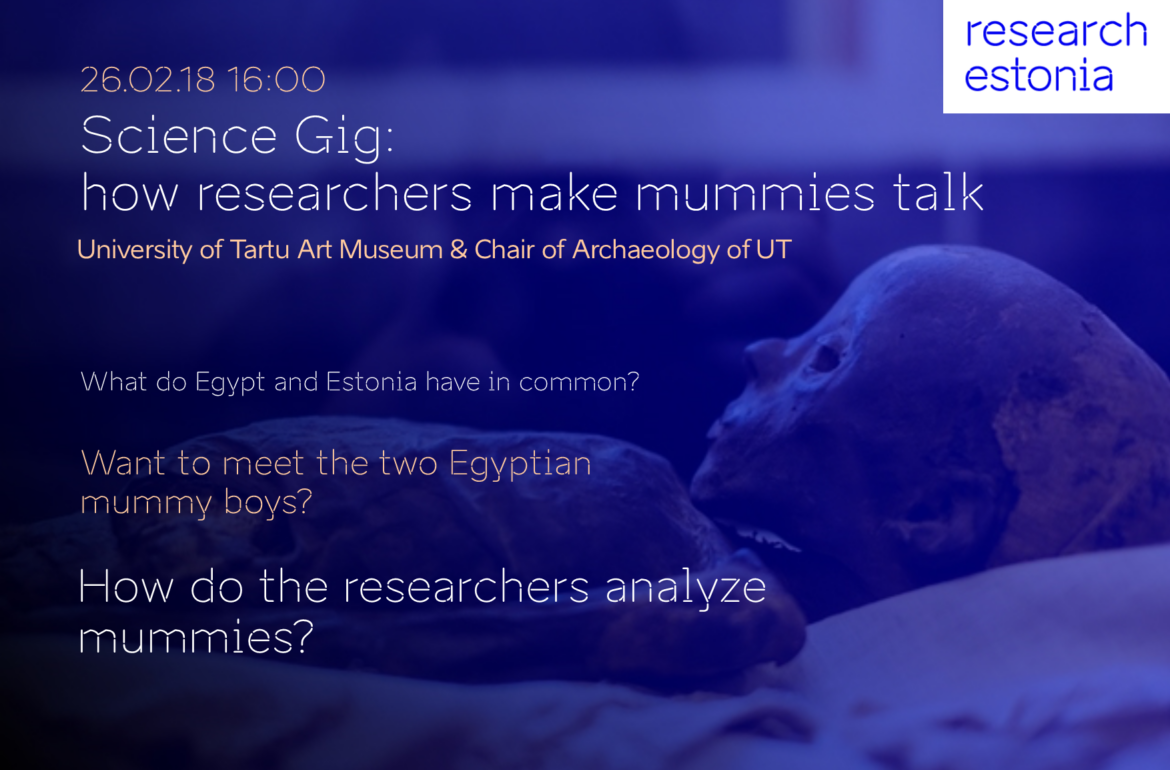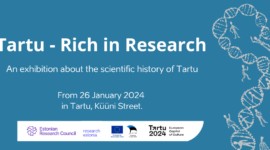What do Egypt, a land far in the Middle East, and Estonia have in common? As weird as it sounds – mummies.
Two mummified Ancient Egyptian boys, one 9-12 years old and the other 2-4 years old, have been lying in the heart of Tartu already for 200 years.
REGISTRATION needed: http://bit.ly/2E1QCoj
WHAT: Science Gig: how researchers make mummies talk
WHEN: 26.02.2018 at 16.00 MEET UP AT 15.50 IN FRONT OF UT MAIN BUILDING https://goo.gl/maps/dm2cscCHZ5U2
WHERE: @University of Tartu Art Museum & @Chair of Archaeology of UT
HOW MUCH: Free 🙂
WHO: International Students
ORGANIZERS: Estonian Research Council in cooperation with University of Tartu Art Museum & Chair of Archaeology
CONTACT: reimo.rehkli@etag.ee
During the Science Gig the International students will meet the two Egyptian mummy boys who originate from the collection of Otto Friedrich von Richter (1791-1816) – one of the first local orientalists in Estonia.
Since 1981 the mummified boys have been a part of UT Art Museum collections and in 2017 a special chamber dedicated to Ancient Egyptian death culture was created.
In 2017 the mummies were thoroughly studied by an interdisciplinary team of more than 20 researchers. From ancient DNA and inner organs, to bones, embalming techniques and textiles – every small detail about the mummies was examined allowing to spark new light on the background of the mummies.
During the Science Gig the participants will meet the two mummies and learn about their history and journey to Estonia. Additionally, you will get an overview of how mummies are studied with various scientific methods in order to e.g. discover their gender, age, origin etc. Archaeologists from UT will introduce you the archaeology laboratory, and show e.g. how ancient textiles are analyzed or 3D models are made to have a better understanding of the lives and deaths of these two mummies.
Did you know that the earliest ancient Egyptians buried their dead in small pits in the dessert and that the heat and dryness of the sand dehydrated the bodies quickly?
These were the natural ‘mummies’. Later, the ancient Egyptians began burying their dead in coffins to protect them from wild animals and developed a method of preserving bodies so they would remain lifelike. The process included embalming the bodies and wrapping them in strips of linen. This is the process we know as mummification.
This event is supported by Estonian Research Council through European Union Regional Development Fund.
 Back
Back

